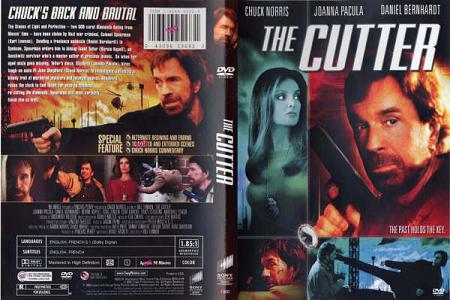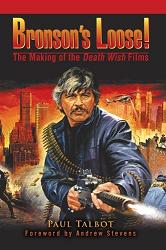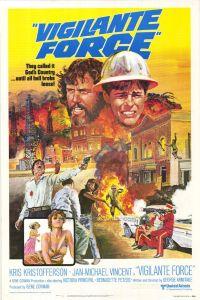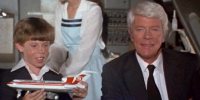Angels Of The Apocalypse
Now Playing: CRIMSON RIVERS II
2001's CRIMSON RIVERS is a very good French crime drama that could easily be compared to SILENCE OF THE LAMBS and SEVEN, I suppose because on the surface it's about two detectives--one young, the other older--pursuing a serial killer who mutilates his victims and displays them in a gruesome manner. That CRIMSON RIVERS really isn't any more similar to those American hits than that does not mean that it isn't worth watching. It definitely is. Columbia/Tri-Star chose to release it directly to video in the U.S., which is a shame, because I think it could have attracted a healthy box office similar to that of, for instance, CROUCHING TIGER, HIDDEN DRAGON. I'm surprised there hasn't been an American remake of it, like Hollywood did with INSOMNIA.
Tonight I saw the sequel, CRIMSON RIVERS II: ANGELS OF THE APOCALYPSE. It's also a good movie, not as good as the original, but still worthwhile. Jean Reno returns as Parisian detective Niemans, who investigates the strange murder of a man found entombed Poe-style behind the concrete wall of a monastery. Later, a customs agent is murdered by a robed figure who uses a nailgun to crucify his victim.
Meanwhile, a younger detective (Benoit Magimel) runs over (literally--with his car!) a raving man who bears resemblance to Jesus Christ and rants about the Four Horsemen of the Apocalypse. The two detectives join forces when they learn their cases are connected, and a third detective (Camille Natta), a religion expert, discovers that the victims all bear the same names and occupations as the real Jesus' twelve apostles.
Christopher Lee is the main villain, an ex-Nazi, but the subordinate villains are a lot of fun. They're sorta like ninja priests. Faceless assassins dressed in brown priest robes, these guys confound the cops with amazing physical agility and strength. The movie's best setpiece has Magimel chasing one of these guys on foot halfway across Paris, bouncing off of buildings, leaping through glass windows, jumping on and off of trains, and climbing into an abandoned steel mill. It's an amazing foot chase, even better than the witty one in the original CRIMSON RIVERS.
In fact, director Olivier Dahan makes wonderful use of interesting locations in addition to the mill, including the famous Maginot Line, which includes hundreds of miles of underground tunnels and waterways built to fortify the French border against the Germans in World War II. Dahan stages some intriguing, creative killings and boosts the bad guys' credibility by having them thwart Reno and Magimel's opposition at every turn.
Luc Besson's script suffers somewhat from its implausible premise, although I was mostly able to swallow it fine. The story is ridiculous, but Dahan's stylish direction keeps it from flagging. The leads have no chemistry together, and their characters are thinly developed to the point where it didn't really matter who the detectives were on the case. It could just as easily have been Starsky and Hutch on the job. I still recommend CRIMSON RIVERS II on the basis of its taut action scenes, slick visuals, catchy score and Christopher Lee.
Meanwhile, 24 continues to be the best show on television with a two-hour broadcast tonight. Not a false step to be seen with the exception of Elisha Cuthbert's robotic turn as Jack Bauer's bitchy daughter Kim, who accepted her father's Phoenician return with what I think was a glare. It's kind of hard to tell what emotions Cuthbert was trying to express. But, damn, she's cute.
Also rising from the ashes is C. Thomas Howell's acting career. He and star Kiefer Sutherland are presumably friends who have appeared in at least two films together, which can be the only explanation as to how Howell ended up guesting on a hit TV series. To be fair to the guy, he works all the time in DTV features and occasionally on television, even though he's never been much of an actor and has lost whatever good looks he had as a young man. He and Sutherland are the same age, but you wouldn't know it to see them together.
Also guest-starring on 24 for the first time tonight were JoBeth Williams, who was a very good and very attractive leading lady in '80s films like THE BIG CHILL and TEACHERS, and Ray Wise, who was in ROBOCOP with another 24 guest star, Peter Weller. Too bad Kurtwood Smith is busy on THAT '70S SHOW. He would kick ass as a dickhead CTU boss (okay, 24 producers, get to work on that for next season!).
8404 songs on iTunes now:
"Crimson and Clover"--Tommy James & the Shondells
"Celebration"--Kool and the Gang
End Titles of THE TERROR--Ronald Stein
"Love Will Find A Way, Part II"--The Electronic Hole
"It Was A Very Good Year"--William Shatner!
"Won't You Try Saturday Afternoon"--Jefferson Airplane
"Studio di Colore"--Ennio Morricone
"My Name Is Nobody"--Ennio Morricone
BLACK MAMA, WHITE MAMA radio spot
"I Can Show You"--Rupert's People
"A Child's Smile"--Clear Light
Theme from COOL MCCOOL
"The Flying Machine"--The Flying Machine
"One More Drink"--Mason
"I've Just Seen You"--Act of Creation
"Comets"--Pussy
Posted by Marty
at 10:44 PM CST


 The DEATH WISH franchise is one of genre cinema’s most schizophrenic. Over a 20-year period beginning in 1974, five DEATH WISH movies were theatrically released by four different studios. Even though most of them were set in New York City, filming occurred in three different countries on two continents. And whereas the original film was a serious drama about urban crime and its effects on decent, law-abiding citizens, later entries could hardly have been more cartoonish if their hero had fallen off a cliff and been banged on the head with an anvil. About the only thing all five DEATH WISHes have in common is their star: the venerable Charles Bronson, who finally became a major Hollywood leading man at age 52 after two decades as a character actor and international star.
The DEATH WISH franchise is one of genre cinema’s most schizophrenic. Over a 20-year period beginning in 1974, five DEATH WISH movies were theatrically released by four different studios. Even though most of them were set in New York City, filming occurred in three different countries on two continents. And whereas the original film was a serious drama about urban crime and its effects on decent, law-abiding citizens, later entries could hardly have been more cartoonish if their hero had fallen off a cliff and been banged on the head with an anvil. About the only thing all five DEATH WISHes have in common is their star: the venerable Charles Bronson, who finally became a major Hollywood leading man at age 52 after two decades as a character actor and international star. Here's a trashy action movie produced not by Roger Corman, but by his brother Gene, who was also a prolific Hollywood producer whose projects were usually a little classier and budgets a little higher than Roger's.
Here's a trashy action movie produced not by Roger Corman, but by his brother Gene, who was also a prolific Hollywood producer whose projects were usually a little classier and budgets a little higher than Roger's. I think picking 17 Oscars correctly is my new record, although I think I was helped by a bunch of no-brainers among this year's nominations. The only major shock of the night was the Original Song award to HUSTLE AND FLOW, and I don't think CRASH was expected to overcome BROKEBACK MOUNTAIN for Best Picture. I don't know why the Independent Spirit Awards continue to exist, since the same films nearly always make up the Academy Award nominations.
I think picking 17 Oscars correctly is my new record, although I think I was helped by a bunch of no-brainers among this year's nominations. The only major shock of the night was the Original Song award to HUSTLE AND FLOW, and I don't think CRASH was expected to overcome BROKEBACK MOUNTAIN for Best Picture. I don't know why the Independent Spirit Awards continue to exist, since the same films nearly always make up the Academy Award nominations. It's still kinda funny to see Peter Graves' perplexed acceptance of the movie's success. It's no secret that Graves was very apprehensive about doing AIRPLANE! He thought the humor was tasteless and didn't understand why the three directors wanted him, an actor known for playing very straight action and dramatic roles, to be in it. All the way through shooting, Graves didn't get the humor, and really winced at all the "ever been to a Turkish bath" stuff. It wasn't until the first screening, which his wife dragged him to, that he realized, from listening to the audience's loud laughter, that the movie genuinely was funny.
It's still kinda funny to see Peter Graves' perplexed acceptance of the movie's success. It's no secret that Graves was very apprehensive about doing AIRPLANE! He thought the humor was tasteless and didn't understand why the three directors wanted him, an actor known for playing very straight action and dramatic roles, to be in it. All the way through shooting, Graves didn't get the humor, and really winced at all the "ever been to a Turkish bath" stuff. It wasn't until the first screening, which his wife dragged him to, that he realized, from listening to the audience's loud laughter, that the movie genuinely was funny.